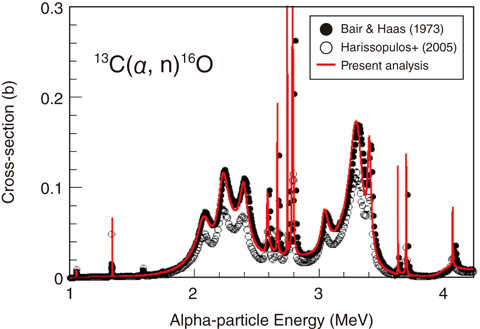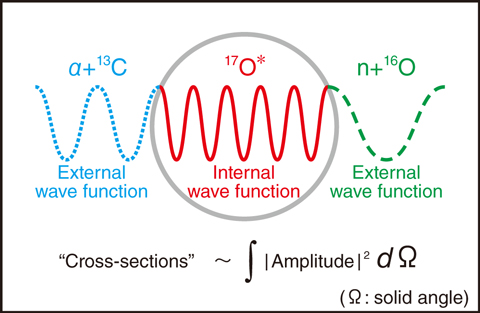
Fig.4-3 The systematic difference between the measurements together with the estimated values from the present analysis

Fig.4-4 Concept of the resonant nuclear-reaction theory (R-matrix)
Reactions occur in the nucleus with probabilities that depend on the energies of incident particles such as neutrons, protons, and alpha particles. Such probabilities, which are called nuclear-reaction cross-sections (or nuclear data), are fundamental values for nuclear engineering. With the recent progress of nuclear technology, cross-section data require ever-higher accuracy. Furthermore, the uncertainty values of these data must be fully accountable. To meet these demands, we are performing studies to enhance the general-purpose Japanese Evaluated Nuclear Data Library (JENDL; latest version is JENDL-4.0).
The cross-section shows resonant peaks in the low-energy particle reactions, reflecting the internal structure of the nucleus. Since those peaks are very difficult to predict only using nuclear theories, the most useful approach for determining the values is to conduct nuclear-data experiments at accelerator facilities with a combination of detectors. Here, let us indicate that we always see differences among measured data to a lesser or greater extent. An example is illustrated in Fig.4-3, in which an old measurement of the 13C(α, n)16O reaction from 1970s and a recent one are systematically different by ∼30%. Such a typical systematic difference is usually ascribable to uncertainty in the sample density.
In this study, we applied the R-matrix theory to the analysis of those experimental data (Fig.4-4). We adopted this theory essentially because it is strictly based on the quantum mechanics; hence, the theoretical calculation always obeys the quantum-mechanical conservation law (i.e., unitarity of the scattering matrix). The parameters in this theory are those for the matching condition of the internal and the external wave functions. We estimated those values from the shape of experimental data, assuming their absolute values to be unknown. The solid curve in Fig.4-3 shows the results of the present analysis, where the estimated values are consistent with the old experimental data. Moreover, the uncertainty of the present values is ∼2.5% on average, which is significantly smaller than the difference in the measured data.
Uncertainty is always included in any measurement to a lesser or greater degree. However, we have presented a possibility for reducing the problem using a synergetic comparison between the measured nuclear data and the theory.
<Previous: 4 Nuclear Science and Engineering Research | Next: 4-2>